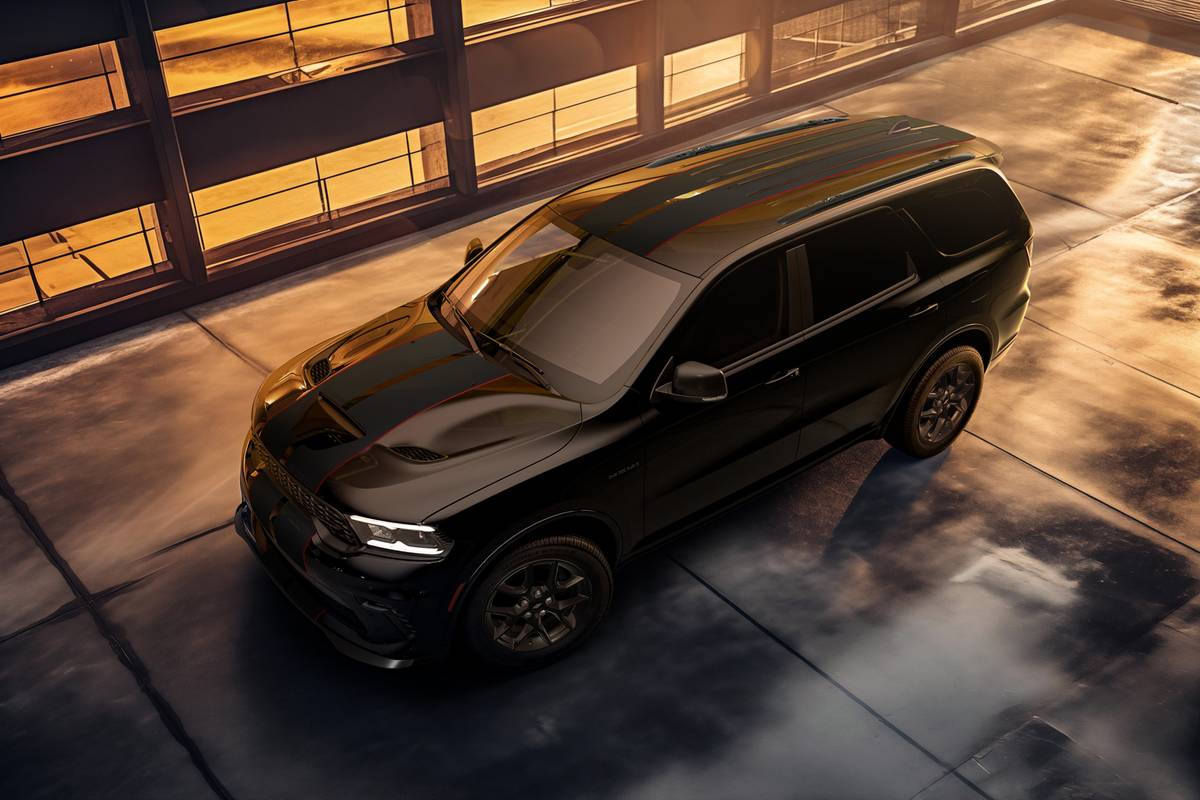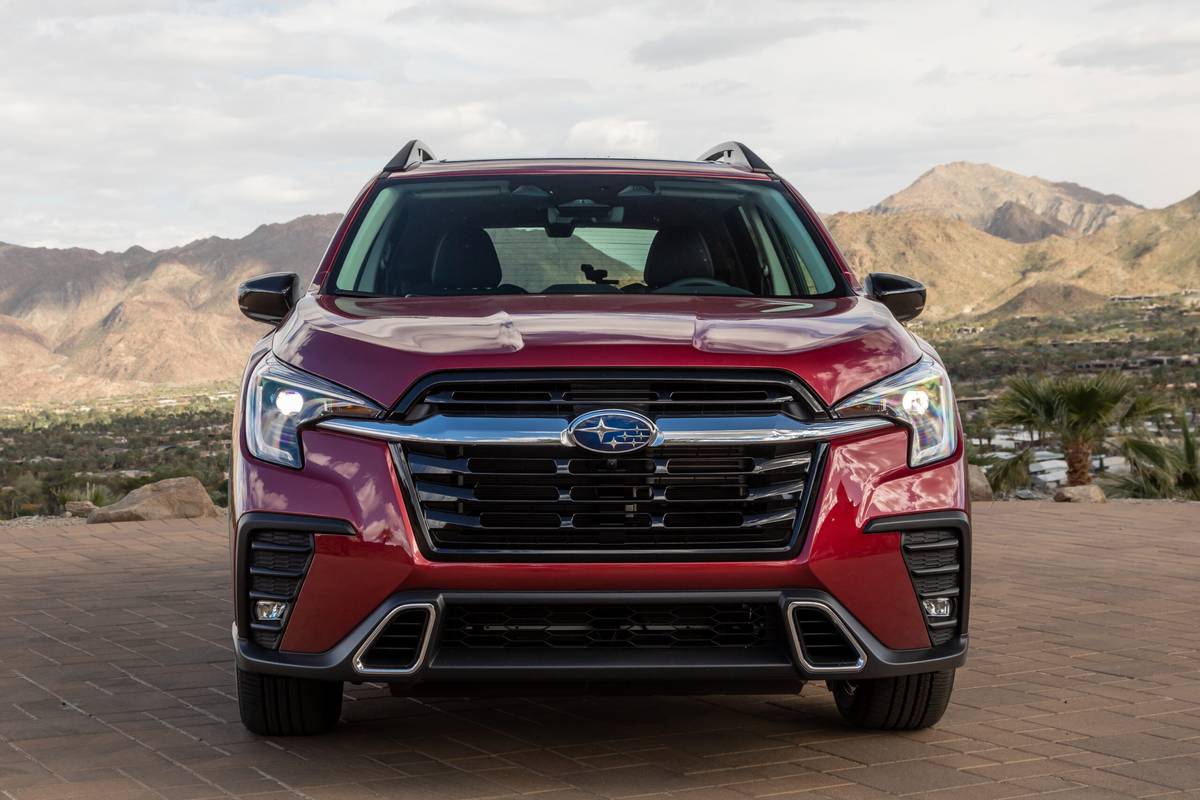chicagotribune.com's view
Mazda has divided its subcompact 323 lineup into two models for 1990: the 323 hatchback that focuses on economy and the 323 Protege notchback that emphasizes luxury.
We test drove both, and it`s not just hatchback versus notchback or 323 versus Protege that separates the two.
The 323 we drove was the base model powered by a 1.6-liter, 82- horsepower, 4-cylinder engine teamed with a 5-speed manual transmission.
There`s plenty of pep, at least from first to second. Reach second and you realize the 323 obtains 29 m.p.g. in city driving and 37 m.p.g. in highway driving and the intent is to stretch the distance between fuel stops, not shorten the distance between stop lights.
There`s enough power to get you going in traffic; but mileage is the goal with the 323, and it delivers.
That`s not to suggest you can`t work and play hard at the same time. Ride and handling are excellent though you may want to upgrade from the standard 13-inch, all-season radial tires to 14-inch. A rear antiroll bar is standard and helps reduce body lean in corners. With optional power steering ($250), parking and tight maneuvering were especially noteworthy. The 323 is one of those turn-on-a-dime-and-leave-change vehicles.
The Japanese long have been known for designing a lot of room into a small vehicle. The 323 continues that tradition.
The 323 is built on a 96.5-inch wheelbase and is 163.6 inches long, up from a 94.5-inch wheelbase and 161.8-inch length on the `89 model. From the outside, you`d think you`d pay the price for high mileage by being cramped. Not so. There is more than ample head, leg and arm room front and rear and rear-seat head room is above average.
The rear seat back folds down as one piece to hold more cargo. On the upgraded SE version the seat backs fold individually.
The windshield is spacious, too, and provides excellent visibility. Of course, all that glass means air conditioningat $785 is a must.
The 323 is not without shortcomings, however. The most noticeable drawback is styling, which Mazda describes as “distinctive“ to separate it visually from other small cars. If Picasso designed cars, he would have had a hand in the 323. That`s Picasso as in, “What the heck is it supposed to be?“ Another annoyance was the dime store-like vinyl seat covers. We drove the base model-so base it came sans radio-but that`s no excuse for such cheap seats.
Standard equipment in the 323 includes power brakes, rear window defogger, rear heater ducts, center console, trip odometer and a rear package shelf. The SE adds body colored bumpers, tinted glass, cloth seats, cloth door trim, digital clock, and door map pockets. Power steering, air and AM-FM stereo radio with cassette ($450) are among the popular options and we advise all of them.
The base 323 starts at $6,599 and the SE at $8,329, both with 5-speed manual as standard. Automat ic is a $700 option in each.
The Protege has a different look and feel to it. Styling is a bit boxy but pleasant.
Protege is built on a 98.4-inch wheelbase and is 171.5 inches long, up from a 94.5-inch wheelbase and 169.7-inch length for 1989.
The intent with Protege, Mazda says, is to fill the size and price void between subcompact and compact models where most Japanese automakers now don`t roam. Toyota, for example, has the subcompact Corolla and then moves up to the Camry at considerably more money.
Honda has the Civic at the bottom of the line, and then you move up to the more costly Accord. Nissan has the Sentra, and then you move to the higher priced Stanza. At Mazda, you can start with the 323 and move to the Protege on the way to the 626.
The Protege is offered in SE and LX models with a full-time four-wheel- drive model coming in late fall.
We drove the LX powered by a lively 1.8-liter, 16-valve, dual overhead cam, 4-cy linder, 125-h.p. engine. A 1.8-liter, 16-valve single overhead cam engine that develops 103 h.p. is standard in the SE and four-wheel-drive models.
We tested the 16-valve in Protege with the standard 5-speed manual, the choice for optimum acceleration, and the optional ($700) 4-speed automatic, the choice if you do lots of city driving and don`t want to be bothered with shifting five times every block.
Protege was more lively and energetic on the straightaways, corners and turns with the 5-speed and more docile with automatic even with power steering in both.
The EPA rating with the 103-h.p. engine is 28 city/36 m.p.g. highway with 5-speed, 24/31 with automatic. The LX is rated at 25/30 with 5-speed and 23/29 with automatic.
Interior room was very good but a bit more rear-seat leg room would make long journeys less tiresome.
The trunk is massive and rear seat backs fold individually should you want to carry skis.
The Protege pays attention to detail in many ways, such as having fuel filler door and deck lid release levers under the driver`s seat for easy access. Also a pair of cupholders slip out from the dash.
There are some shortcomings, however. Those cupholders are right behind the gear shift lever and are hard to reach.
You also find the power dual mirror controls behind the light stalk on the steering wheel, which makes it hard to see much less use. Cruise control is another one of those hard-to-see controls.
And, though the Mazda covered the seats with comfortable cloth, it could have gone with a bit wider side bolster for more lateral support and comfort on long trips.
Standard equipment on the SE includes body-colored bumpers, tinted glass, dual manual mirrors, cloth seats, cloth door trim and digital clock.
The LX adds dual electric body colored mirrors, upgraded interior trim, tilt steering, dual exhausts, tachometer, full wheel covers, power steering, intermittent wipers, 15-inch all-season radials, 4-wheel disc brakes, front and rear antiroll bars for improved cornering, individually folding rear seats and AM-FM stereo with cassette. Air runs $785.
Base price for the SE is $9,339, for the LX it`s $10,359, both with 5- speed manual. Add $700 for automatic.
Protege isn`t a 626; it wasn`t meant to be. It`s a step up from the 323 in power and appointments. It is a $9,000 to $11,000 offering for those who want much of the luxury and performance of a 626 but not the $12,459 base sticker on the lowest priced 626 DX 4-door sedan.
Latest news



